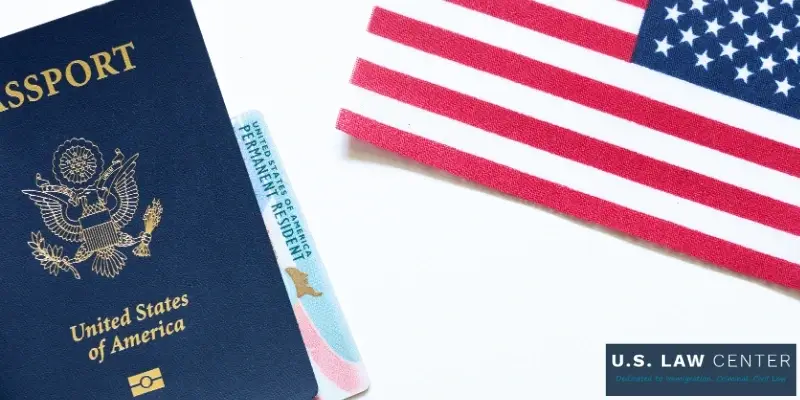Gaining a green card as an immigrant is the first step to citizenship. It also allows an individual to permanently live and work in the U.S. When pursuing a green card, one of the major questions that applicants ask is, How long does it take to get a green card in California? How long it takes to obtain a green card varies anywhere from a few months to a decade.
The process of obtaining a green card is often confusing and time-consuming. This timeline is dependent on the type of green card you’re applying for, where the office processing your application is located, and other factors. Some types of green cards have a yearly quota of applications, and you have to wait until the next year for your application to be processed. Some forms of green cards have quicker turn-around rates than others.
California Immigration Statistics – The Importance of a Green Card
When it comes to US immigration trends, California remains front and center. In 2023, there were roughly 154,000 people living in the state of California with Deferred Action for Childhood Arrivals (DACA) protection, and 62,500 who had Temporary Protected Status (TPS). Of these individuals, many are eager to pursue a green card to gain stability and access to greater opportunities, like education, government services, and jobs.
As of 2021, California was housing roughly 2.4 million undocumented immigrants, with these individuals facing great uncertainty and marginalization. Undocumented folks in California and across the nation are commonly locked out of access to the crucial legal protections and services that are commonly available to those who have lawful status. Many undocumented individuals may be eligible for a green card, but are unaware or unable to access representation.
A green card is a powerful tool that can protect immigrants in California who have precarious or temporary legal statuses. Many who are potentially eligible, however, choose not to pursue lawful permanent resident status due to a lack of funds, inadequate legal representation, or the complex bureaucracy and lengthy timelines associated with the process.
Understanding Green Card Delays & Policy Changes
Although the months or even years-long timeline of getting a green card can be overwhelming and a significant barrier for individuals to securing lawful permanent resident status, it can be manageable with the right legal representation. Wait times for green cards are not only influenced by category, but also by USCIS backlogs, international relations, and policies at the federal level.
Even high-priority cases have experienced delays fueled by surges in applications, global uncertainty, and changes in policy. For example, the annual green card cap for some categories can result in years-long wait times, especially in saturated categories like employment-based third preference (EB-3) categories or family-sponsored visas for siblings.
Furthermore, cases that are filed in overburdened regions such as California could be experiencing even greater processing times, meaning that different processing centers across the nation are operating at varying speeds. Furthermore, changing federal processes, such as executive actions, visa bulletin updates, and public charge rules, can have a direct impact on the ease and speed of green card processing.
Therefore, many applicants choose to work with legal counsel to have peace of mind throughout the process.
Legal Help for Mixed-Status Families
There are many households in California that are made up of a conglomerate of green card holders, U.S. citizens, DACA or TPS recipients, and undocumented immigrants. These families can be going up against unique challenges, especially when trying to apply for benefits or if someone is facing deportation risks.
At U.S. Law Center, our award-winning firm, we have decades of successful representation of immigrants across the Golden State, and we understand more than anyone the importance of family and the particular burdens that immigrant and mixed-status families are facing. Founded by attorney Sanjay Sobti, who is a member of the American Immigration Lawyers Association (AILA) and a master of many languages, we put our clients front and center in each case.
From helping undocumented citizens or DACA or TPS recipients work towards more permanent options like an Adjustment of Status to supporting family members with their petition for spouses, parents, or children, we can help folks establish residency despite intimidating processing times.
Family-Based Green Cards
If you are hoping to obtain a visa or green card and you have an immediate family member who is a U.S. citizen, they could petition on your behalf. An immediate family member includes:
- Spouses
- Parents
- Unmarried children under 21
- Siblings
- Married children, in some cases
Your family member can fill out the necessary forms and submit them. However, this form of green card is subject to yearly quota caps, and this can lead to the wait being significantly longer than other green card types. The quotas place a limit on the number of visas allowed to be approved each year. If your application is too far on the waiting list to be processed, you’ll have to wait until the next processing period or even several processing periods.
Generally, the wait time for this form of green card is six months to several years, and in severe cases, up to 10 years. If the relative petitioning for you is a distant relative or a sibling, it’s likely to take longer than an immediate relative. Some U.S. Citizenship and Immigration Services (USCIS) offices are busier than others, and this can also affect your wait time.
Marriage-Based Green Cards
If you are a spouse of a U.S. citizen, they can petition on your behalf for a visa and a green card. This is one of the shorter routes for legal and permanent residency, and there is no yearly quota on marriage-based green cards. When a couple is engaged, a K-1 visa is available so that they can get married on U.S. soil. Then, the couple can petition for a marriage green card.
This initial marriage-based green card is called a CR-1 or conditional resident visa. The process of obtaining this green card takes around 10 to 17 months. This temporary green card lasts for two years, at which point the non-citizen spouse can apply for permanent residency as an immediate relative.
If you are married to a permanent resident of the U.S. and not a citizen, the process differs slightly and can take longer. If you live abroad, it can take anywhere from two to three years, depending on green card availability. If you live in the U.S., it can take anywhere from 30 to 40 months.
Employment-Based Green Cards
Many people apply for work-based visas, which then allow them to apply for employment-based green cards. The wait times for employment green cards depend on what field of work your job is in, your skills, and your education.
The wait time for employment-based green cards can be as little as a year in a low-competitive field or up to four to six years in highly competitive fields.
Priority workers who qualify for EB-1 employment get the highest priority because of their advanced skills or extraordinary achievements in arts, sciences, or businesses. The next priority, or EB-2, is for professionals with advanced degrees and experience in the same areas. EB-3 is for all other skilled workers and professionals. There are also categories for special immigrants and business investors. Each form of employment green card has different quotas.
Returning Resident Immigrant Visa
Permanent residents who spend longer than a year outside of the U.S. can apply for this type of green card. You must prove that you intended to return, but you were unable to do so, and it was outside your control. There is no processing time for this green card, only the application process and interview.
FAQs About California Green Card
Q: How Many Green Cards will be Issued in 2024?
A: The U.S. Citizenship and Immigration Services (USCIS) predicts the yearly quota cap at 197,000 visas for the year 2024. Generally, each year there is a cap of around 226,000 family-based green cards. This is divided into different priorities of family member preference.
Q: What Is the Average Wait Time for a Green Card in the U.S.?
A: This depends on the type of green card, and it can be anywhere from a few months to as many as 10 years. Family-based green cards can take as few as six months to as much as a decade, while employment-based green cards take one to six years. Priority for family-based visas depends on the closeness of your petitioning relative, and priority for employment depends on your education, skillset, and the competition in your field.
Q: What Is the Fastest Way to Get a Green Card in the U.S.?
A: The diversity visa, or visa lottery, is one of the fastest but most competitive ways to gain a green card. If you meet the criteria and have a high school degree with two years of experience from certain countries, you can enter the visa lottery. This provides 50,000 permanent resident visas to those who are selected, and they can then begin the process of filing. From entering the lottery to having your application processed, it takes around two years.
Q: How Long Does It Take a U.S. Citizen to Apply for a Green Card for Their Parents?
A: U.S. citizens filing a petition for their parents can usually anticipate a response in about six to 12 months or greater. Processing depends on several factors, including the specific office the petition is sent to, and it could take longer. If the petitioner’s parents live in the U.S., you can file both necessary forms.
Q: Can a California Lawyer Speed Up the Green Card Process?
A: Although a California immigration lawyer cannot directly speed up U.S. government processing times, they may be able to significantly reduce any delays that are caused by incorrect filings, missing documents, or avoidable errors. They can work to strategically prepare applications for faster review, as well as explore any options for expedited processing, if available.
U.S. Law Center: Green Card and Immigration Attorneys
If your application is done right the first time, the process will be much quicker. Contact U.S. Law Center today by filling out our online form to see how we can help with the filing, petitioning, and application processes.


